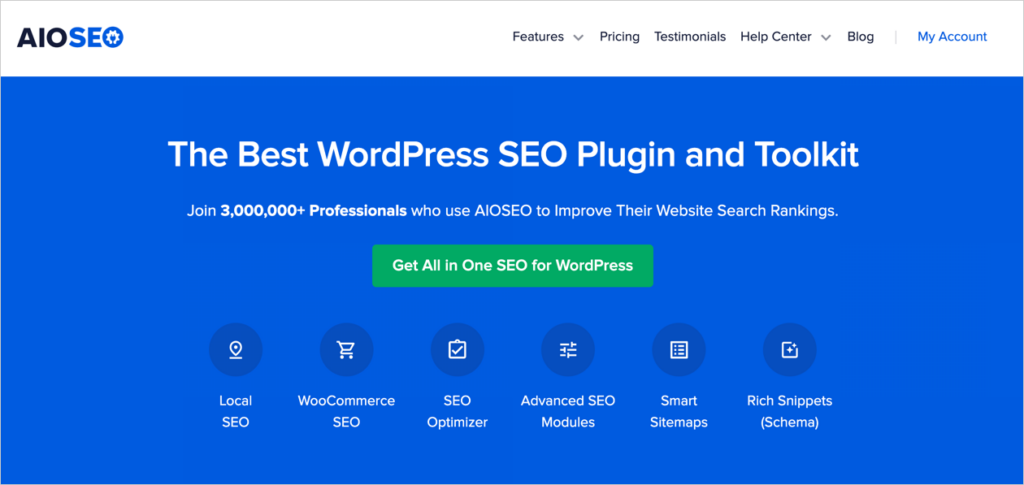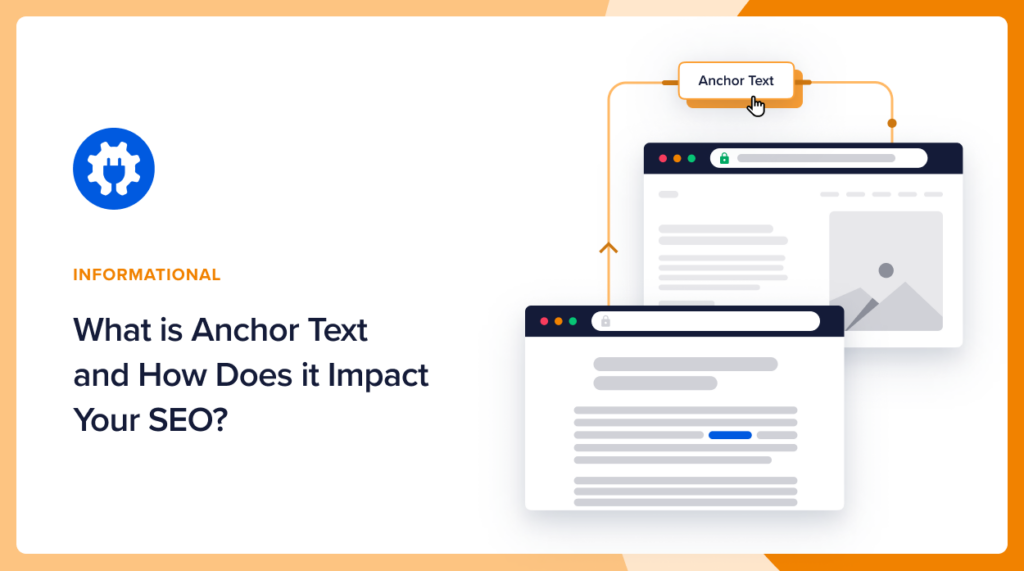Wondering what anchor text is and whether it affects SEO?
Because anchor text is so common it’s easy to miss its role in search engine optimization.
In this article you’ll learn what anchor text is and a simple approach to optimize it for SEO.
In This Article
What is Anchor Text?
Anchor text is hyperlinked, clickable text on a web page.
Here’s an example in a sentence: “To boost your click-through rates, consider making your pages eligible to be displayed as rich snippets.”
In this example, “rich snippets” is anchor text.
Both people and search engines read anchor text to understand what the linked page is about.
Is Anchor Text a Ranking Factor?
Yes, anchor text is a ranking factor with Google Search. It helps the search engine’s crawlers understand page content, and that may influence how a page ranks in related search queries.
Good Anchor Text
Good anchor text is clear and straightforward. It tells the reader (and search engines) what the linked page is about. This helps the reader decide whether they want to click the link.
For example consider this sentence: “It’s not unusual for small business owners to receive unsolicited email pitching SEO scams.”
Because “SEO scams” is the anchor text, anyone clicking on the link will expect to see information about SEO scams. In our example, the anchor text is a good match for the linked page.
By contrast, bad anchor text is confusing or misleading. For example, anchor link text that says “click here to win a MacBook Pro,” is clear. But if the link takes you to a page that has no such contest, the reader will feel tricked. These are called “spammy links.” And Google penalizes those.
In addition, Google recommends to:
- Avoid generic anchor text like “click here.”
- Keep anchor text concise. (Don’t link entire sentences or paragraphs.)
- Avoid keyword stuffing. (Don’t try to cram lots of keywords into your anchor text.)
Good anchor text practice applies also to both internal and external links.
How Does Anchor Text Impact SEO?
Anchor text can have a surprising effect on SEO. How you use anchor text on your own site is one issue. The other is how other sites linking to you use anchor text.
Let’s start with the former.
Internal Linking and Relevance
Internal linking is important for SEO. It helps Google understand which pages on your site are the most important and how your content and topics are related
And by offering, for example, related reading recommendations, you can make the most of organic traffic you’ve already attracted to a page.
Also, adding internal links to orphan pages can help them rank in search engine results pages (SERPs).
In all these cases, anchor text that is explicit helps Google understand what the linked page is about. And that can impact the ranking of that page.
When adding links, a good rule of thumb is to always consider first what’s best for the reader.
An Easy Way to do Internal Linking
There’s an easy way to add internal linking to your SEO strategy. We recommend using the Link Assistant, a beginner-friendly tool that comes with the All in One SEO (AIOSEO) WordPress plugin (Pro version).

Link Assistant will show you:
- How to find and fix orphan pages.
- Suggestions for internal links.
- Suggested anchor text.

Because you can click to add links, there’s no need to even edit individual pages.
We think this is an enjoyable way to manage link building while boosting SEO.

All in One SEO (AIOSEO) is an established plugin with thousands of 5-star ratings on WordPress.org. Over 3 million sites are currently using the plugin.
Adding internal links to your most important conversion and “money pages” can help them rank higher. This is one of the most powerful (and overlooked) search engine optimization tactics.
Backlinks and Money Anchors
If you’re trying to sell anything on the internet, chances are you’ve already received unsolicited proposals for link building.
These are from self-described digital marketers or “link builders” who promise to get other sites to link to yours. (This is also called “backlinking.”)
Commonly, these salespeople offer to create guest posts on other sites and include a link back to your site.
With rare exceptions, the quality of these guest posts is poor. And with the advent of ChatGPT and Bard, many of these marketers will likely be simply copy-pasting AI content.
Unnatural Patterns
These marketers may use the same anchor text over and over, across multiple sites. The repeated anchor text is typically a transactional keyword like “best marketing consulting course” or “buy discounted gold ring.”
A transactional keyword is a phrase that searchers use when they are close to making a purchase. Examples are “car insurance quote” and “book Bahamas cruise.” When used as anchor text, these keywords are called “money anchors.”
This keyword is usually one you’re trying to rank for. When applied to backlinking, this tactic forms an unnatural pattern that rings Google’s alarm bell. Google will likely view it as link spam. And that can lead to penalties and damaged rankings.
Here’s how Google explains it: “Any links intended to manipulate PageRank or a site’s ranking in Google search results may be considered part of a link scheme and a violation of Google’s Webmaster Guidelines.”
The Dangers of PBNs and Spam Blogs
Inexperienced marketers may also place guest posts on PBNs (private blog networks).
You can think of these as networks of connected spam blogs. The sites in the network exist only to get money for links.
They’re often easy to detect due to the oddball mix of topics. One spam blog’s featured stories were on toe fungus, how to buy a tractor, and how to make your own prom dress.
But some PBNs feature sites that may look, to the inexperienced eye, as legitimate. For example, the site may be focused exclusively on health topics or on financial topics.
Google can detect inbound links from spam blogs. If you suddenly have a number of backlinks coming from these sites because you (or your marketer) placed content on them, it can harm your SEO, regardless of the anchor text used.
Read up on Google’s guidelines on paid links and link building schemes. And remember: it’s best to create your own link-building strategy. At minimum, educate yourself on link building, and understand the dangers, before hiring someone else to do it.
A link building campaign, done the wrong way, can ruin your SEO.
“Backlink profile” or “link profile” refers to the quality and quantity of backlinks to your site.
How Did the Penguin Update Impact Anchor Text?
A key area that Google’s 2012 Penguin algorithm update targeted was abuse of anchor text: some site owners used it for keyword stuffing.
The takeaway: don’t try to cram lots of keywords into anchors. And follow Google’s simple guidelines.
How to Optimize Anchor Text
The best principle for anchor text (and linking) is to always put the reader first.
As you do this, SEO will follow. This is because Google’s algorithms are designed to satisfy searchers.
Here are some tips for making the most of your anchor text and links.
- Ask: Will it benefit the reader? Add links (and anchor text) where you have something genuinely helpful to share with readers. This can include linking to sources of data or facts and related content.
- Provide clarity: You don’t need to rely solely on the anchor text itself to describe the link in a sentence. Google’s natural language comprehension enables it to understand context. So, write the sentence primarily for readers.
- Make sure your links stand out. Blue underlined text is the most common style for hyperlinks. Whichever style you use, be sure that your linked text stands out from surrounding text so readers know it’s clickable. This will boost the chances that people you’ve attracted to the page will explore your linked pages.
- Keep accessibility in mind. Anchor text that is easy to understand and descriptive helps the visually impaired too. This is because they use text-to-speech screen readers. Some sites have experienced higher rankings after improving accessibility. This isn’t because accessibility is a ranking factor though. It’s because good SEO practices cohere with good accessibility.
Different Types of Anchor Text
As you read more on anchor text, you’ll probably come across different terms that describe various types of anchor text.
Here’s a short glossary to help you navigate web content on the topic.
Branded Anchors
Branded anchor text includes your business or brand name. Here’s an example:
- You can learn more about blogging at Blog Tyrant.
Site Name Anchors
These anchors include your site name only. For example:
Naked Anchors or Naked URL
In this case, the URL is both the link and the anchor text. (Also called a “naked link anchor.”) Naked anchors aren’t very common. Here’s an example:
- For more information, see https://wpbeginner.com.
Article / Page Title Anchor
This one is self-explanatory. Here’s an example:
- You’ll want to check out this article: 7 Best Countdown Timer Plugins for WordPress.
Generic or “Noise” Anchors
These anchors do not contain keywords, instead they use generic text like “in this article” and “see this example.”
Exact Match Anchor
This anchor text matches the target keyword that the page is trying to rank for.
For example, if you have a page that you want to rank for “Jacksonville emergency plumbing” and a page linking to yours uses “Jacksonville emergency plumbing” — that’s exact match anchor text.
Sometimes people use the term “phrase match” or “exact match keywords.”
Partial Match Anchor Text
Partial match anchors contain all the words in a target keyword, but not in the same order. For example:
- If the target keyword is “on page SEO tools,” then “SEO tools for on-page optimization” is a partial match anchor.
Alt Text or Alt Tags
When you use an image to link to something, the image’s alt text is the anchor text.
(New to alt text? Check out this beginner’s guide to image optimization. It includes a section explaining alt tags.)
What’s Next?
We hope this article helped you understand what anchor text is, how to write and use anchor text, and how it can benefit your readers and your SEO.
You may also be interested in exploring how the AIOSEO Link Assistant can help you create links and anchor text. And check out our guide to On-Page SEO Tools.
If you found this article helpful, then please subscribe to our YouTube Channel. You’ll find many more helpful tutorials there. You can also follow us on Twitter, LinkedIn, or Facebook to stay in the loop.
Disclosure: Our content is reader-supported. This means if you click on some of our links, then we may earn a commission. We only recommend products that we believe will add value to our readers.


Good article. Very informative and useful. Nicely penned. Thanks
Thank you for your kind comment, Dr. Rudra. I’m glad you found the article useful.